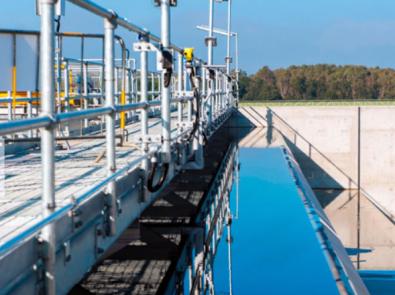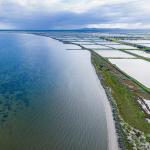Download activities from this lesson plan, which focus on bacteria in the sewage treatment process, the effect of aerating water on oxygen, how gravity transports sewage, and chemicals contained in laundry powders and detergents.
Micro-organisms play an important role in the biological treatment of sewage at Melbourne’s sewage treatment plants. Students learn how they reduce the harmful nutrients and organic matter in the effluent. Biogas from these processes is converted into renewable energy.
Download the lesson plan
This lesson plan contains modules explicitly linked to the Victorian Curriculum. It has also been adapted into an excursion tour kit that can be used in conjunction with guided tours of the Western or Eastern treatment plants, which are run by Melbourne Water's Education team.
Download the full plan or individual activities below.
Activities
Activity 1: Mystery laundry powders and detergents
Students investigate the substances that enter the sewerage system (in particular laundry powders and detergents that contain salts and phosphates) by identifying mystery samples through testing.
Duration: one period session and one double-period session (practical)
Activity 2: Investigating flow rates
Students gain an understanding of how gravity and pumping is used to carry sewage through pipes to the Eastern or Western Treatment Plants. They investigate flow rates by posing scientific questions and designing their own investigations to answer them.
Duration: one double-period session
Activity 3: Helpful, hardworking bacteria wanted
Students elaborate on aspects of the sewage treatment process observed during the visit. Using the context of a job advertisement, students describe what they know about bacteria and their role in sewage treatment.
Activity 4: Getting agitated
Students measure the effect of aerating water on dissolved oxygen (DO) levels and relate the increased DO to the aeration stage of sewage treatment and types of bacteria at either the Eastern Treatment Plant or the Western Treatment Plant
Victorian curriculum links
- VCSSU090: Science and technology contribute to finding solutions to a range of contemporary issues; these solutions may impact on other areas of society and involve ethical considerations
Science > Science understanding > Science as a human endeavour - VCSSU091: There are differences within and between groups of organisms; classification helps organise this diversity
Science > Science understanding > Biological sciences - VCSSU092: Cells are the basic units of living things and have specialised structures and functions
Science > Science understanding > Biological sciences - VCSSU093: Interactions between organisms can be described in terms of food chains and food webs and can be affected by human activity
Science > Science understanding > Biological sciences - VCSSU095: Mixtures, including solutions, contain a combination of pure substances that can be separated using a range of techniques
Science > Science understanding > Chemical sciences - VCSSU10: Water is an important resource that cycles through the environment
Science > Science understanding > Earth and space sciences - VCELY387: Plan, draft and publish imaginative, informative and persuasive texts, selecting aspects of subject matter and particular language, visual, and audio features to convey information and ideas to a specific audience
English > Literacy > Creating texts
Resources
Western Treatment Plant
Find out about the Western Treatment Plant, a place of historic and cultural significance. It sustainably treats half of Melbourne’s sewage, and is a thriving ecosystem with an internationally recognised bird habitat. Take our virtual tour to discover more!


